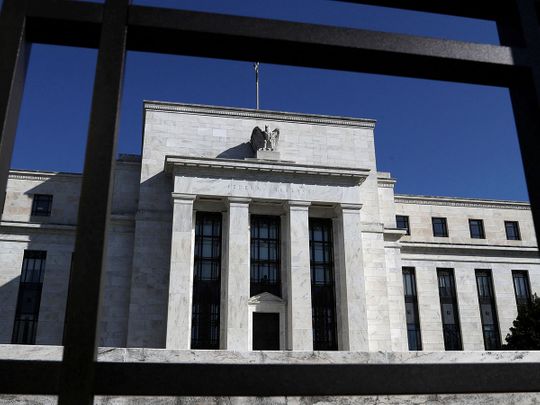
Washington: The Federal Reserve is poised to raise interest rates by half a percentage point Wednesday, capping off one of the most aggressive years in the central bank's history and marking a new phase in its fight against inflation.
The Fed has hoisted rates six times this year and will announce a seventh at the end of its two-day policy meeting, which began Tuesday. To control the highest inflation in decades, central bankers have been on a tear, raising their base policy rate from zero to more than 4 percent. The dramatic actions are the result of a dramatic year when inflation repeatedly bucked the Fed's expectations, climbing this summer to 9.1 percent, leaving officials scrambling to keep up.
Now, the Fed's top policymakers face a different challenge. For most of 2022, they were trying to move quickly, and in big swings, to get interest rates into "restrictive territory" that will slow the economy. But 2023 will raise other questions about how much higher rates go and how long the central bank will hold borrowing costs high.
Wednesday's expected rate hike would bring the federal funds rate to between 4.25 and 4.5 percent, and rates will keep climbing early next year. Rate hikes operate with a lag, and the full force of the Fed's decisions won't seize the economy - or cause a recession - for months to come. What that looks like, and how severe the pain is, remains to be seen.
"Do they go to 5 percent? Maybe, but they're pretty much at the end," said Peter Boockvar, chief investment officer of Bleakley Financial Group. "But just because they're close to being done with raising rates doesn't mean they're anywhere close to transitioning off that terminal level."
Along with their rate hike announcement at 2 p.m. Eastern time, Fed officials will release a fresh set of economic projections on inflation, the labor market and economic growth. At 2:30 p.m., Fed Chair Jerome H. Powell will hold a news conference, where he's expected to receive questions on future rate hikes, the inflation outlook and odds of a recession.
The Fed's actions in 2022 packed a punch. The central bank hiked rates in March for the first time since the pandemic began, moving by a modest quarter of a percentage point. When officials met again in May, they opted for a stronger increase of half a percentage point. Then they went further, hiking rates four consecutive times between June and November by a whopping three-quarters of a percentage point each, moving so forcefully that Fed watchers began criticizing the moves as overkill.
For months, financial markets have flown high and sunk low on Fed policy. In November, when Powell signaled that the bank would start to ease up on rate hikes at this meeting, stock markets rejoiced, and they rose on Tuesday after the release of an encouraging inflation report. But Wall Street is still jittery, since the Fed has made clear that taming the worst inflation in decades will involve pain for businesses and households alike.
Powell maintains that the economy can still avoid a recession, especially under a scenario where the labor market comes back into sync and employers nix millions of vacant positions, rather than laying off already employed people. So far, the labor market is still growing, and layoffs have been limited to smaller pockets of the economy. Crucially, consumer spending is keeping up despite high inflation and uncertainty about the future.
But not even the experts can guarantee what's to come. Powell and his colleagues concede that inflation, broken supply chains and the economy's reemergence from the pandemic have repeatedly bested Fed models. And all year, Fed officials scratched out their forecasts to downgrade expectations for the labor market, economic growth and inflation. Only time will tell if they get 2023 right.
"We'll continue to make forecasts, but we're going to have to be humble and skeptical about forecasts, I think, for some time," Powell said last month at the Brookings Institution. "And that calls for a lot of risk management."
Plus, the coming year could bring some unforeseen shock, much like Russia's invasion of Ukraine did in February. The global economy could also descend into a recession while international central banks all hike rates at the same time. Boockvar noted that this week alone, rate increases are slated to be announced by the European Central Bank, the Bank of England, the Norges Bank, the Saudi National Bank, and central banks in Taiwan, the Philippines, Mexico and Colombia.












